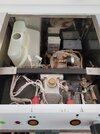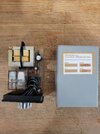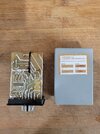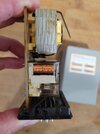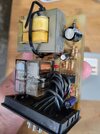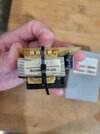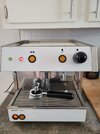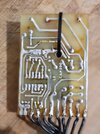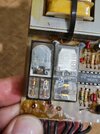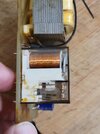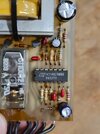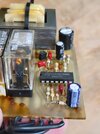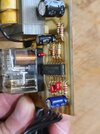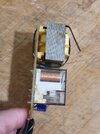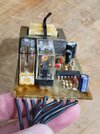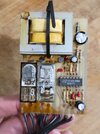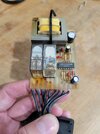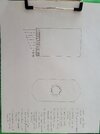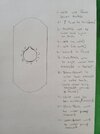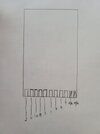Wolfcougar
New Member
Hi, I'm new to the forum and I could use some help figuring out what might be wrong with my Italian espresso machine. I have an old Brasilia commercial espresso machine, but I only use it at home. I'm not sure what model it is, but I'm thinking it's a Brasilia Portofino or a Brasilia Lady (the older machines weren't marked). I'm guessing it was made in the 80s or 90s, so it's pretty low-tech. Not a lot of electronic components. I've talked to a few espresso repair shops and old stereo repair shops about fixing the electronics, but the espresso shop is more of a part replacement shop (no electrical techs in-house), and the stereo shops are seemingly uninterested in looking at an espresso machine.
My current issue is that the machine powers on, but the low water level light stays on (regardless of water level in the tank) and that overrides all other functions of the machine. Thus, nothing else is working. No pump, no heat, etc. There is a water level control box (see photo) that has a transformer and a couple of relays in it.
I'm curious if there is an easy way to 1) test the components in the control box and 2) replace them if something is bad? I can solder/replace components, but I need help determining what to replace.
It's pretty basic old school electronics, and I've tried to test some of the components with my multimeter, but I'm no expert and I don't entirely trust my results. The box appears to have been repaired in the past, but the capacitors look good and I don't see any signs of burnt components. My guess is that the transformer has been replaced in the past (see black zip tie and aftermarket manufacturer's sticker), and it needs to be replaced again. If my thinking is correct, the transformer isn't producing enough power to run the board and kick the relays for the various components. It's a 110v AC machine, but the transformer steps down to 12v DC for the relays. Maybe I'm wrong. I tested the transformer with my multimeter and I have 110v service in and about 10.4 volts out. Does that sound right?
I really feel like this is a simple fix, but I'm just not that experienced. I've found fairly inexpensive "water level controls" online that look like they could be a suitable replacement, but again I'm just not certain how this box works.
Appreciate any help or guidance? I really need some espresso! Thanks for your time,
Jeremy
My current issue is that the machine powers on, but the low water level light stays on (regardless of water level in the tank) and that overrides all other functions of the machine. Thus, nothing else is working. No pump, no heat, etc. There is a water level control box (see photo) that has a transformer and a couple of relays in it.
I'm curious if there is an easy way to 1) test the components in the control box and 2) replace them if something is bad? I can solder/replace components, but I need help determining what to replace.
It's pretty basic old school electronics, and I've tried to test some of the components with my multimeter, but I'm no expert and I don't entirely trust my results. The box appears to have been repaired in the past, but the capacitors look good and I don't see any signs of burnt components. My guess is that the transformer has been replaced in the past (see black zip tie and aftermarket manufacturer's sticker), and it needs to be replaced again. If my thinking is correct, the transformer isn't producing enough power to run the board and kick the relays for the various components. It's a 110v AC machine, but the transformer steps down to 12v DC for the relays. Maybe I'm wrong. I tested the transformer with my multimeter and I have 110v service in and about 10.4 volts out. Does that sound right?
I really feel like this is a simple fix, but I'm just not that experienced. I've found fairly inexpensive "water level controls" online that look like they could be a suitable replacement, but again I'm just not certain how this box works.
Appreciate any help or guidance? I really need some espresso! Thanks for your time,
Jeremy
